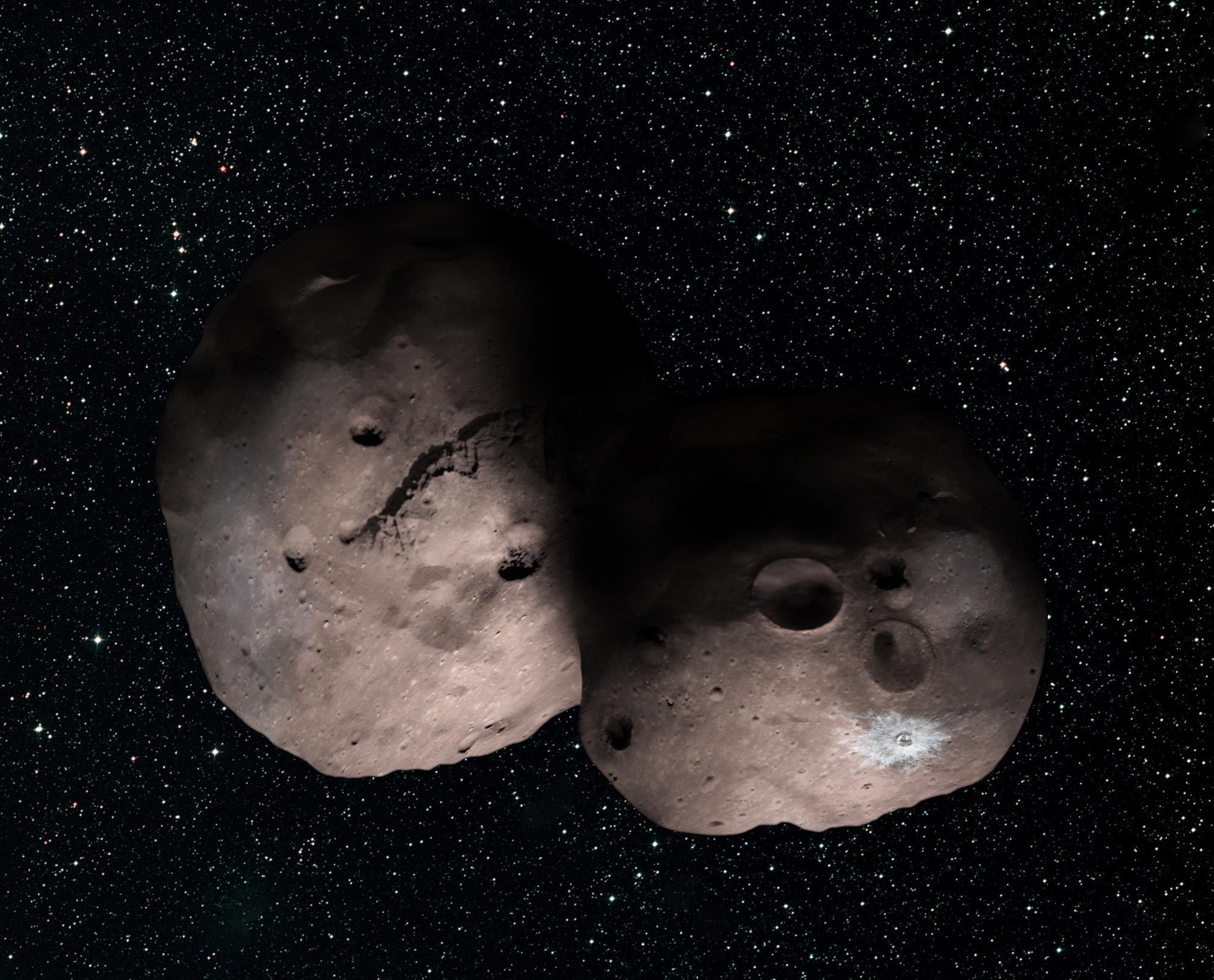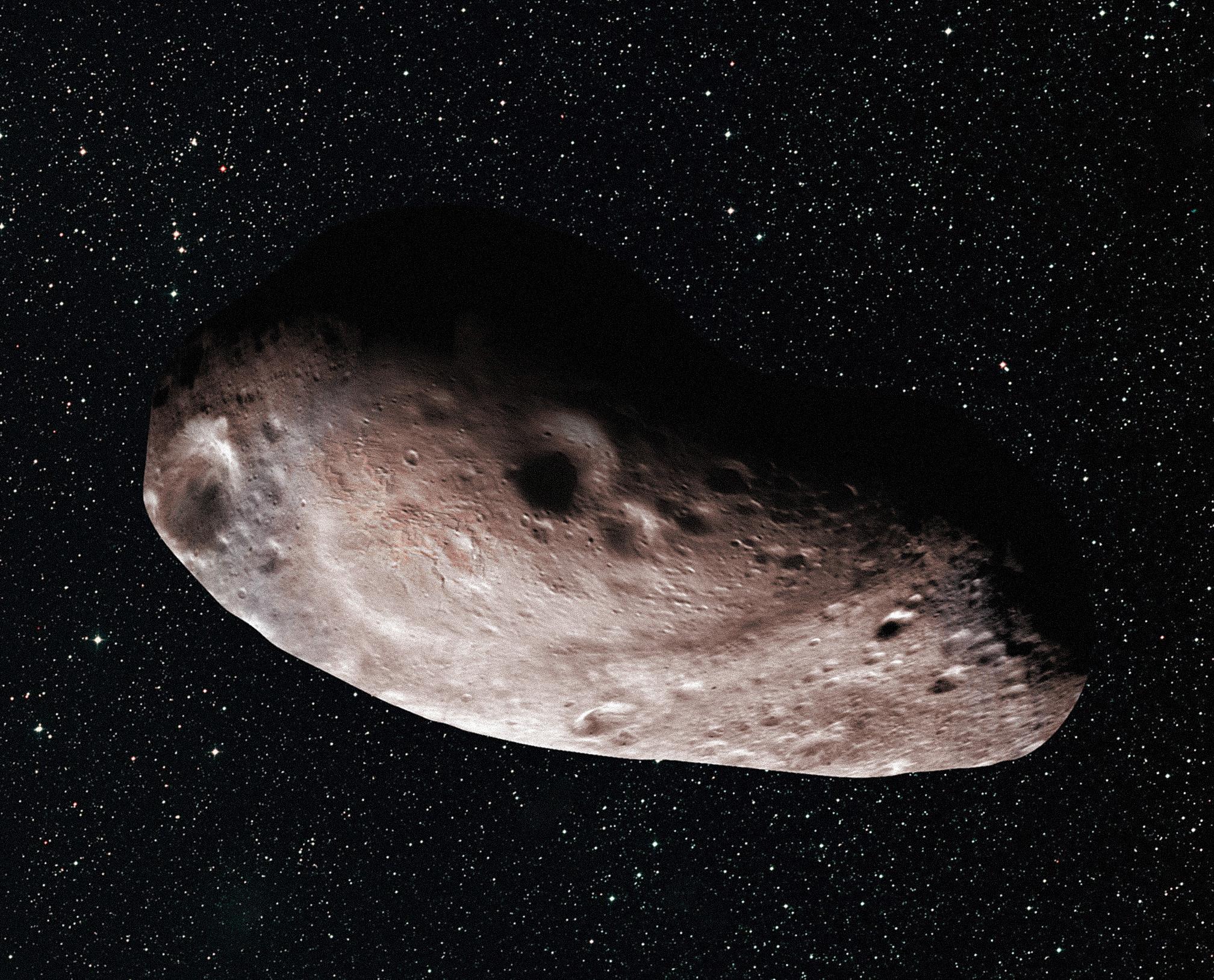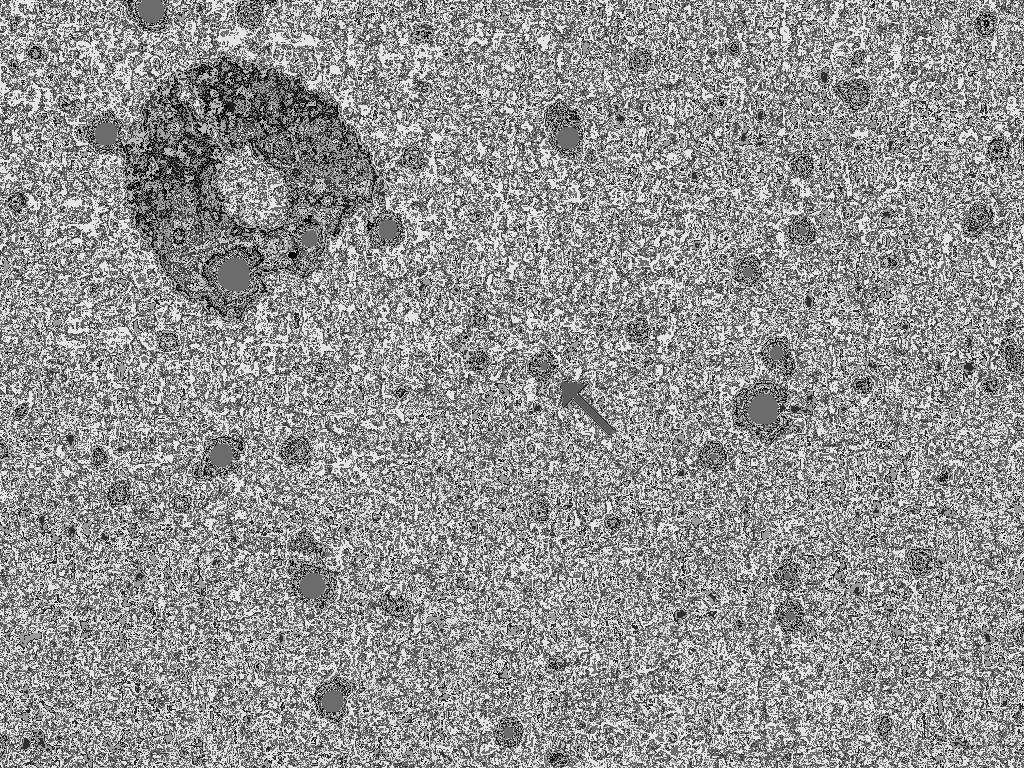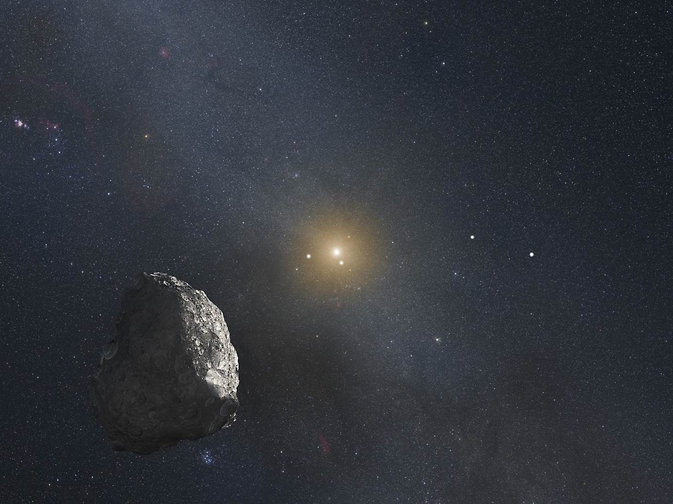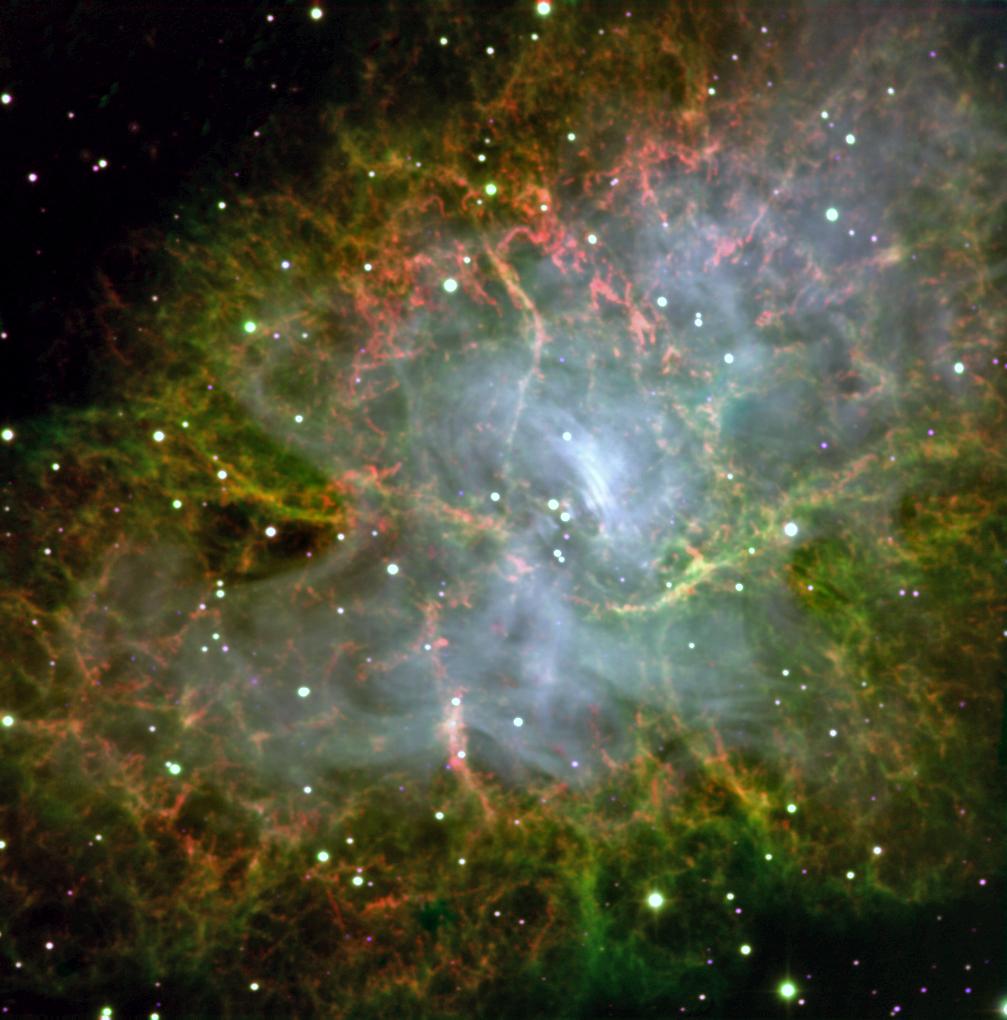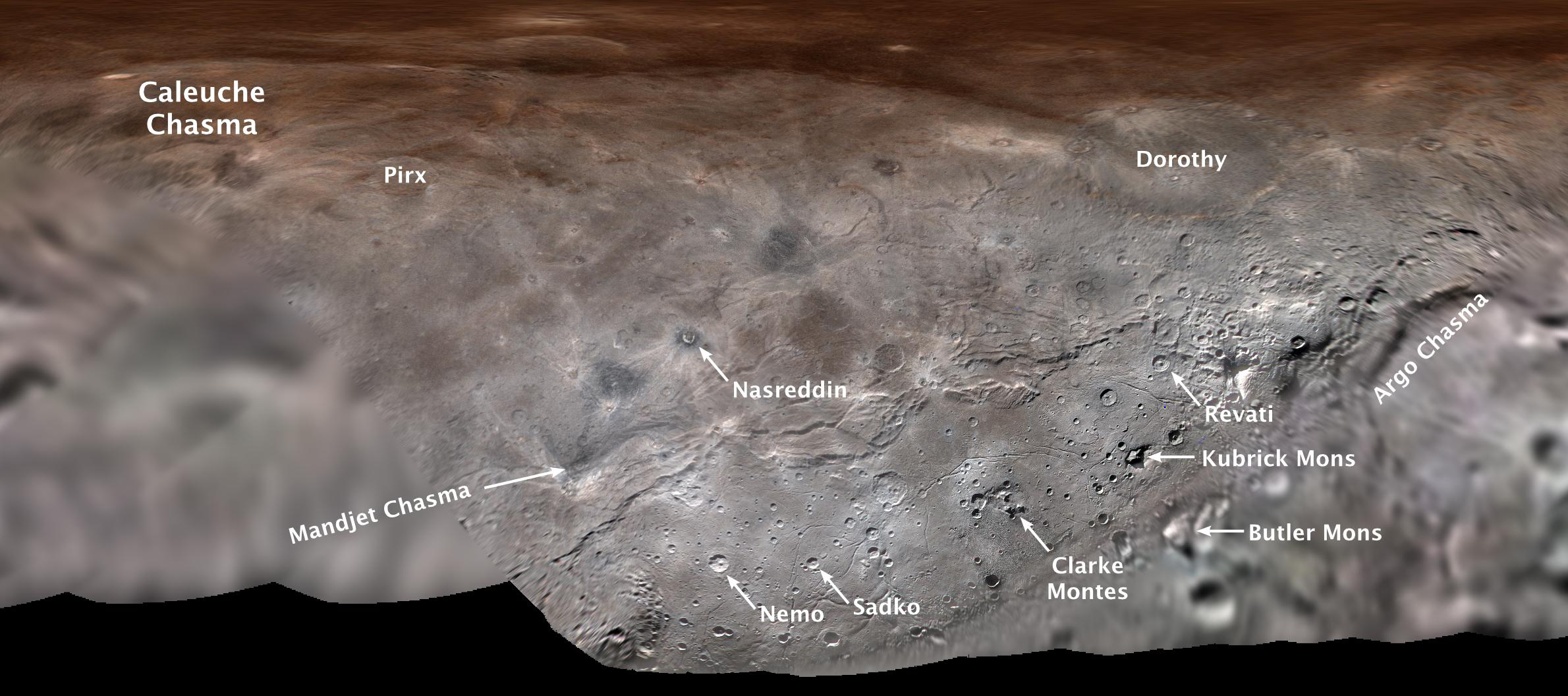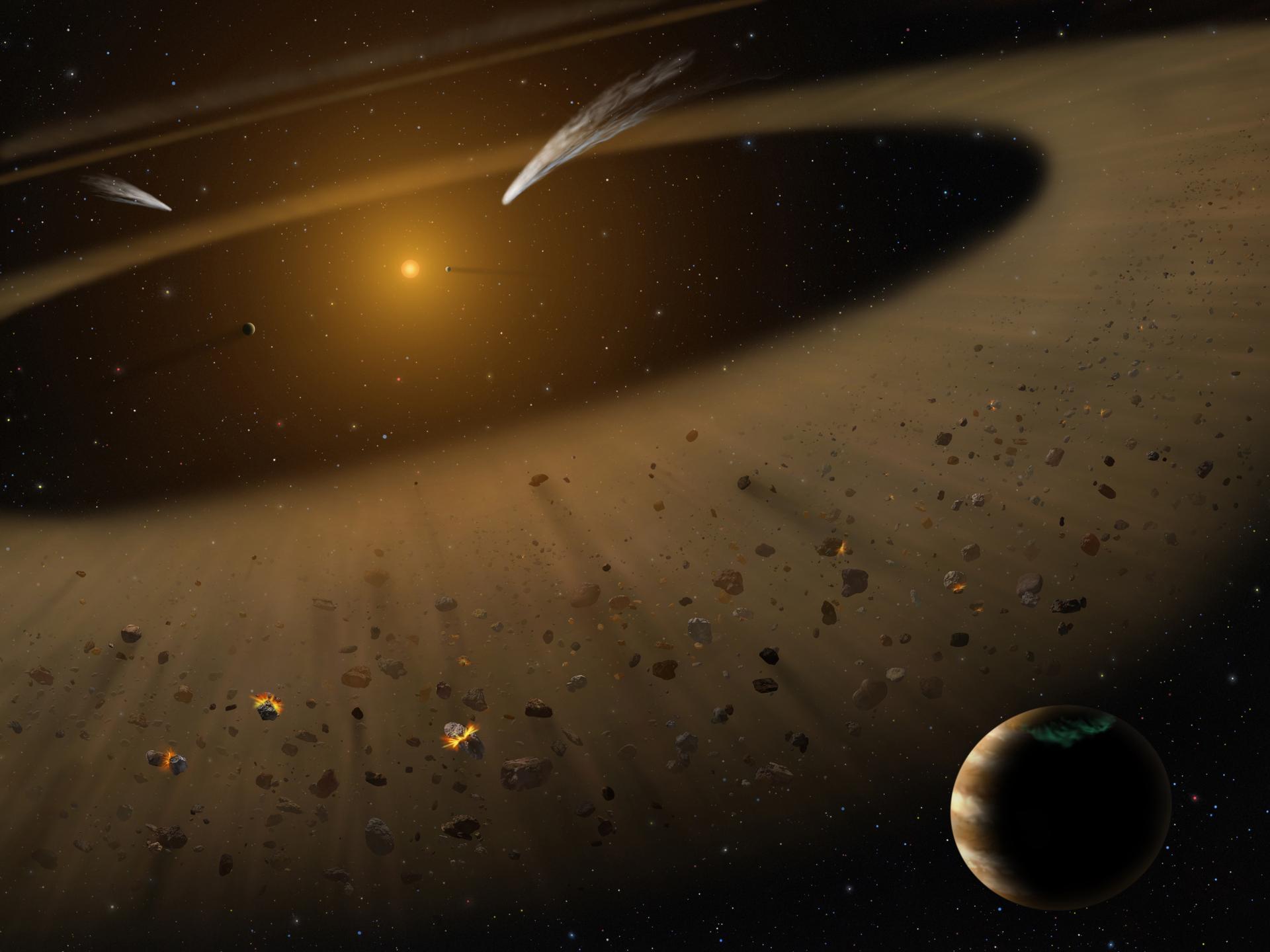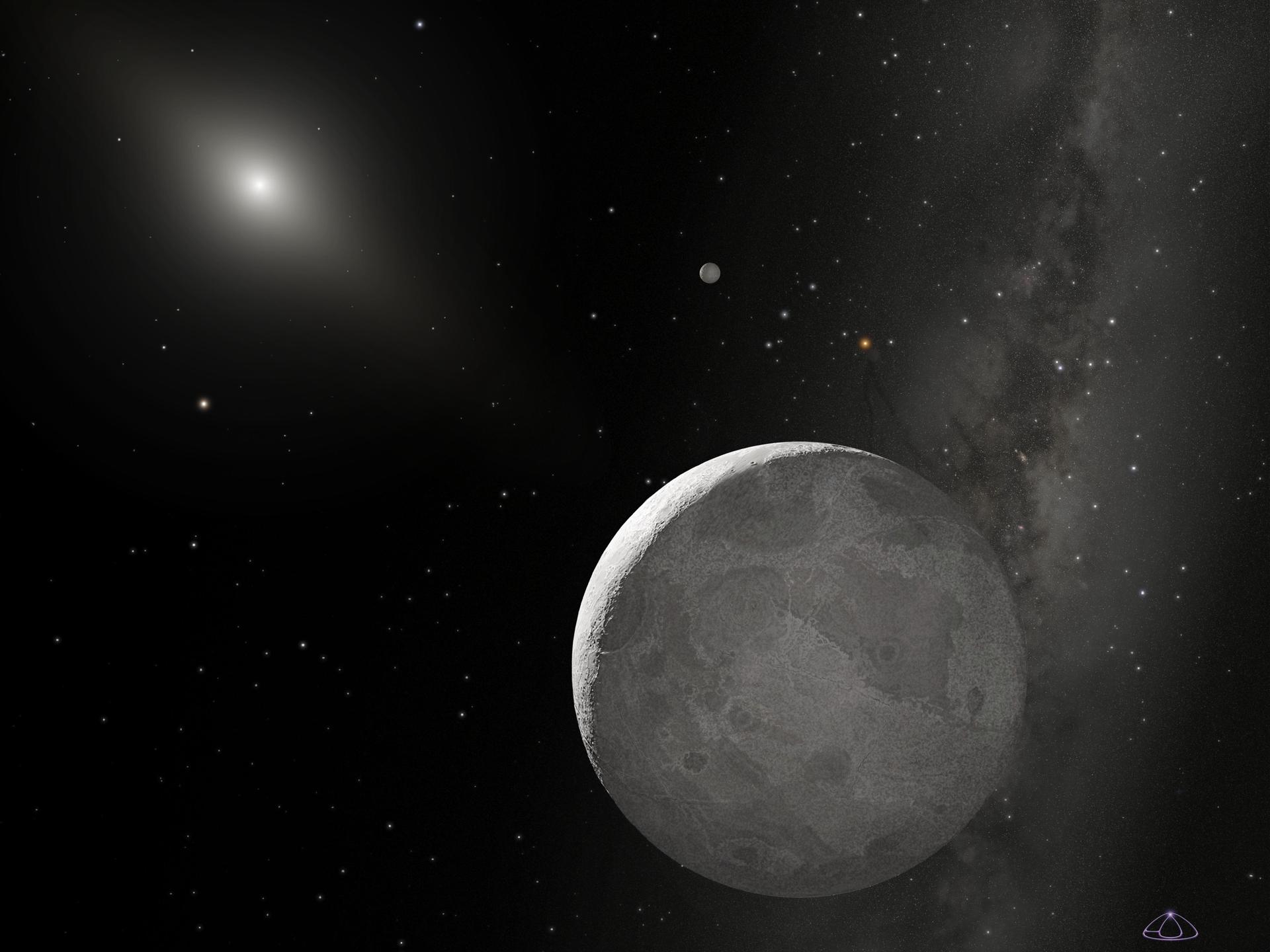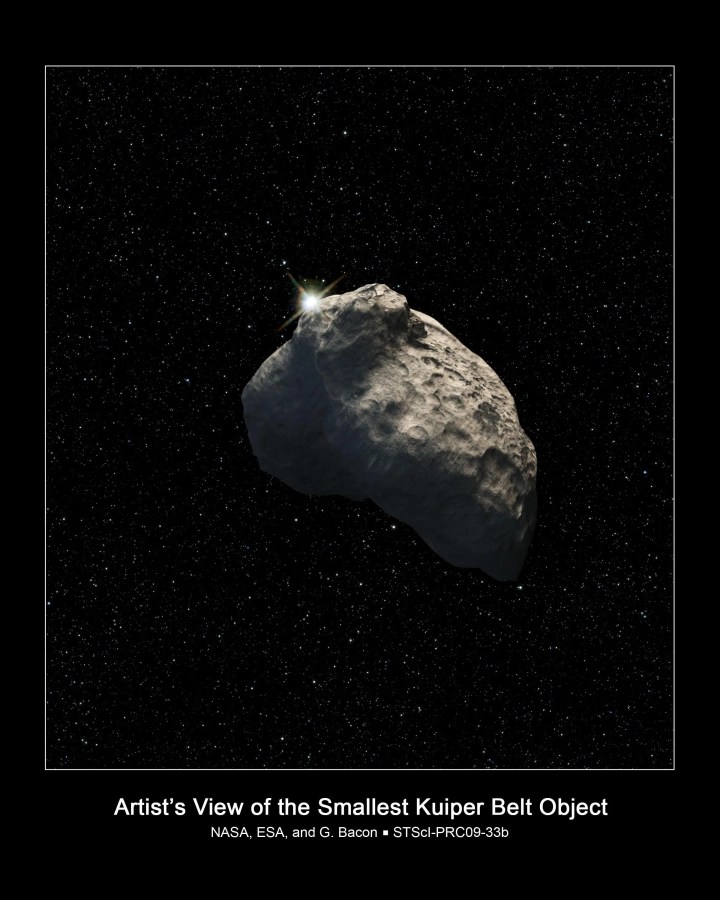Kuiper Belt
This artist's concept shows a massive, comet-like object falling toward a white dwarf. New Hubble Space Telescope findings are evidence...
In June 2014, Hubble discovered Ultima Thule, the farthest object in our solar system ever explored up close by a...
This is an artist's rendering of the New Horizons spacecraft encountering a Kuiper Belt object — a city-sized icy relic...
This Hubble Space Telescope image shows one possible orbit (dashed ellipse) of the 11-Jupiter-mass exoplanet HD 106906 b. This remote...

